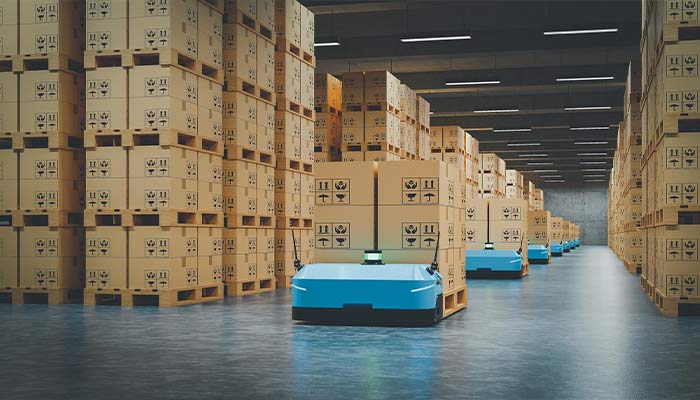I’m always interested in the company, and the Amazon AI strategy made me even more interested.
I like keeping up with the company’s product releases and creating go-to-market plans for its innovations.
This post aims to explain how Jeff Bezos’s company becomes an AI-powered company by putting together a lot of different facts, information, and insights.
How does Amazon use AI to its advantage?
The company that fixes the mode for many parts of the customer experience breaks down internal silos and shows how other companies can do the same. Amazon is a leader in using customer-focused innovation. It has taken its business to the next level by reorganizing itself around its AI and machine learning applications. Rethinking several of the company’s present goals, including its sizable Amazon Web Services (AWS) business and robotics division, was one of them. Others, such as the Amazon Echo and healthcare division, are brand-new companies.
How does a flywheel work?

The company uses the word “flywheel” to show how different parts of its huge business work together as a single machine that never stops moving. The business created and now uses a strong artificial intelligence (AI) flywheel, in which machine-learning discoveries and advancements in one area of the organization feed the work of other groups, who may then create goods or introduce services to have an impact on other teams and the company as a whole.
This is why they call it a “flying wheel”: it has so much power that it turns the whole organization into AI.
At Amazon, artificial intelligence (AI) is more like a ghost that cuts through all divisions rather than having a specific office.
A customer can go to Amazon 4 stars to buy the most popular book in January, ask Alexa to check if the package has arrived, and the product recommendation engine can determine that the end user needs to buy a textbook or audiobook. Jeff Bezos wants a full chain that can be followed.
If you didn’t have your smart plug yet, the company would give you one for a dollar so you could start playing with a smart home. AI affects every part of your interactions with Amazon.
Also, the mobile app will ask you to take a picture of your friend’s clothing style so that the AI can figure out what you like and give you the option to “try before you buy.” Jeff Bezos thinks this is what AI in retail means, but it’s not the whole picture.
How Amazon Ai helps to grow its business

The recommendation engine that makes up 35 percent of Amazon’s revenue uses artificial intelligence. The company’s recommendation engine customizes the list of items clients need to acquire by gathering information about specific customer preferences and transactions. The huge amount of information made or gathered is used to create a “360-degree view” of each client. Using that profile, Amazon can find others who meet the same criteria based on hundreds of touchpoints (data sources) and make suggestions for them.
Results? The company reported Q4 2019 sales of $87.4 billion and said that AWS is up 34%, memberships (Amazon Prime + Whole Foods, Videos, and Music) are up 32%, and Echo, Fire TV, Alexa Voice Remote (called “other”) are up 41%. Online shops have grown by 15%. There are now 150 million Prime members, up from 100 million just two years ago.
The results show that the big investments made by the organization over the past year are paying off in a big way.
Amazon Ai is pushing the retail industry to use more AI.
Price reductions and cross-selling of Alexa smart speakers at Whole Foods, which first seemed to be a straightforward plan, now appear far more difficult for Amazon’s rivals.
As the company develops an omnichannel strategy with physical touchpoints, it has pulled more rabbits out of the hat.
Related
9 Most Booming Ideas For AI-Based Startups In Different Industries 2023
Use the Amazon app to pay.
When you shop at Amazon Book Store, you can scan a QR code at the register to get a paper receipt if you want one. The record of the purchase is kept in the user’s app account’s order history.
Amazon Book Stores put books out on the shelves without prices. What a waste of space and a hard-to-read label! This is information. There are signs in front of the books with reviews and ratings. No price tag! Why? The company wants you to open the app and scan the book to buy it. Can you picture how the data would flow? Not only to analyze the products but also to train the algorithms and set up the infrastructure for machine learning.
Some company stores, like the Go stores, are full of high-tech gadgets. The company uses technologies like computer vision, sensor fusion, and deep learning in self-driving cars. They want information, which they get. The techniques can tell when items are taken or put back on the shelves, and the virtual cart keeps track of them.
